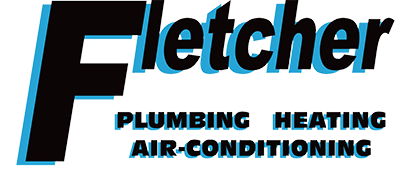
When looking for a heating and cooling system for your home, it’s critical to choose one that balances efficiency, performance and finances. That’s why many property owners look to mini-splits for comfort in their home.
Mini-splits—often called ductless mini-splits—offer many advantages that make them a popular solution for both homes and businesses. They're highly energy efficient, reducing energy consumption and saving on utility expenses, because they eliminate the energy losses that can come with the ductwork found in traditional HVAC systems. They also make it possible for users to tailor the temperature in each room, improving overall comfort while saving energy.
If you’re considering mini-split installation in Smyrna, it’s important to first determine if these devices are recommended for your living situation. Here, we’ll explore how mini-splits compare to other heating and cooling methods.
What a Mini-Split Is and How It Works
A mini-split, or ductless mini-split, is a heating and cooling system that does not use ductwork. It's often used in homes that don't have existing air ducts and for homes with rooms that aren’t served well by the residence's existing HVAC system.
A mini-split system has two main components: an outdoor compressor/condenser and an indoor air-handling unit. The two are attached by a conduit carrying the power cable, refrigerant tubing, suction tubing and a condensate drain.
Here's how it works: the exterior compressor distributes the refrigerant necessary for heat exchange through the coils and the air handler. The indoor device draws in air from the room, cools or heats it over the coils and pushes the conditioned air back into the room.
Mini-Split vs. Central Air
Mini-splits are good for targeted cooling in particular rooms or zones of your residence. They are outstanding for energy efficiency because they only provide hot or cold air for the areas you desire. However, they may not blend seamlessly into every room due to their wall-mounted indoor units.
On the contrary, a central air system uniformly cools your entire home, generating consistent comfort levels throughout. Its ductwork is hidden away, preserving the appearance of your home. On the other hand, it may not be as energy efficient as a mini-split, especially in bigger homes or residences where certain rooms may not need continuous conditioning.
Mini-Split vs. Window AC/Window Unit
Mini-splits are often more energy efficient and quieter than a window air conditioning unit and are able to cool multiple rooms. This is why mini-splits are a versatile option for many homeowners. They also utilize a kind of refrigerant that is more environment-friendly, limiting their environmental impact. These devices can even add value to your home due to their long-lasting nature and superior cooling capabilities. However, they come with a larger initial investment.
On the contrary, window AC units are less expensive to purchase. They might be a good fit for homes that cannot accommodate a central AC system or for families with budget constraints. Even with these advantages, window units can use up to 40% more energy than ductless mini-split systems and are often noisier.
Mini-Split vs. Portable AC
The answer to what is better, a ductless mini-split or a portable air conditioning unit, depends on your goals. If your main worries are energy efficiency and ability to quickly cool a room, a mini-split is considered far superior to a portable AC unit. However, if finances is a major concern, a portable AC costs less.
Mini-Split vs. Gas Furnace
Choosing between a mini-split system and a gas furnace depends on an assortment of factors such as the climate in your city, home size, energy efficiency preferences and budget.
A mini-split system usually is more energy efficient than a gas furnace. It can heat and cool targeted areas inside of your home, supplying custom climate control in individual rooms. Mini-splits also are normally quieter and have a higher up-front cost, but their operating costs are usually lower due to their better energy efficiency.
Alternatively, a gas furnace can be an extremely effective heating solution, particularly in colder climates where mini-split heat pumps may fail to maintain comfort levels in the bitter cold. While they are less energy efficient than mini-splits, gas furnaces likely cost less. Having said that, their operating costs can be greater, especially if natural gas prices increase.
Mini-Split vs. Heat Pump
Mini-splits and heat pumps operate using the concept of heat transfer. They are both energy efficient, but a heat pump's duct system can use more power. This difference aside, the choice between a mini-split and a heat pump often is based on on a homeowner's needs and circumstances.
For instance, if you reside in a warmer climate and primarily need cooling, a mini-split system might be a more effective choice. On the other hand, if you want both heating and cooling and already have ductwork in your home, a heat pump may be a more efficient option.
Mini-Split vs. Space Heater
In regards to heating and cooling a home, mini-splits and space heaters each have strengths and weaknesses. However, for all around efficiency, versatility, comfort and safety, mini-splits outperform space heaters. Mini-splits provide superior energy efficiency simply because they deliver conditioned air right to different zones and can serve multiple rooms at once.
Space heaters are a great deal less expensive to buy but are typically recommended for heating a confined area or an individual room. They also are usually less energy efficient. Unlike mini-splits, space heaters do not supply cooling. The most significant drawback for space heaters is the chance of fire. Industry experts say some 1,700 fires each year involve space heaters.
